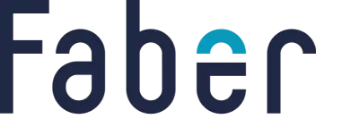As you plan to pay off your debt quickly, you’re tasked with sorting many types of debt that have piled up over time.
It can be overwhelming to create a plan to become debt free. Whether it’s accounting for credit card debt, unpaid utility bills, never-ending student loans, outstanding mortgage payments, or missed car payments, here are steps you can take to build a personalized payoff strategy.
Set a budget
The first step is to evaluate what you can pay against what is owed. Staying on top of your spending is a key part of paying down debts. Be honest with yourself, prioritize your needs, and figure out where you can save money each month. Working with a budget planner can be helpful in this step of the process.
It’s incredibly helpful to lay out all debt payments, your monthly income, and your living expenses before figuring out a game plan. Determine how much you owe and when those payments are due. Start a spreadsheet or write a list—filter that list by payments that accrue the highest or lowest interest rate, minimum payment by due date, and the total principal owed.
Determine a debt repayment plan
Once you have a full view of your debt payments, you can put together a repayment strategy. There are two ways you can do this, via the debt snowball method or the debt avalanche method.
When you approach your debts with the snowball method, you pay off the smallest debts first by assigning a minimum payment toward all accounts. You would also leave aside as much extra amount as your budget allows towards your first smallest debt. When the smallest balance is paid off successively, it frees you money to pay your next smallest debt. Put another way, that amount gets “snowballed” or bigger to help pay off the next smallest balance. You rinse and repeat until all accounts get paid off quickly.
The avalanche method involves paying off the debt with the highest interest rate first. By making minimum monthly payments toward all accounts, you choose the one with the highest owing balance to pay off. Once the biggest debt is paid, you focus on the payment with the second-highest interest rate and continue along until other accounts are paid in order.
Consider consolidating your debt
Another way to become debt free faster is to apply for a line of credit or consolidation loan. When you do this, all debts are consolidated into a single amount owing, meaning you only have to make one payment each month, instead of individual payments.
A financial expert can help you choose the right debt solution for you and determine if you’re eligible for a line of credit or loan. A good credit score and enough income to make monthly payments are usually the criteria. If you make all your payments on time, a consolidation loan won’t impact your credit rating. Try our debt repayment calculator to help weigh your options.
Boost your income to pay off mortgages faster
One way to pay down debts early is to make additional income. Some people find it helpful to get a second job or take on freelance tasks. If you can’t commit to another job, see if you can pull a double shift instead.
If your household has more than one car, consider keeping one that meets all needs. Alternatively, you could trade in the lesser practical vehicle for a quality used car that could shave off thousands in mortgage payments. Your trade-in deal might potentially leave you cash in hand to put toward the next debt on your repayment plan.
Talk to an expert
If you’re feeling intimidated by the process of becoming debt-free, that’s okay (and perfectly normal). A Licensed Insolvency Trustee (LIT) can walk you through it, and get you set up to pay down your debt as quickly as possible. Contact us today for a free consultation.

